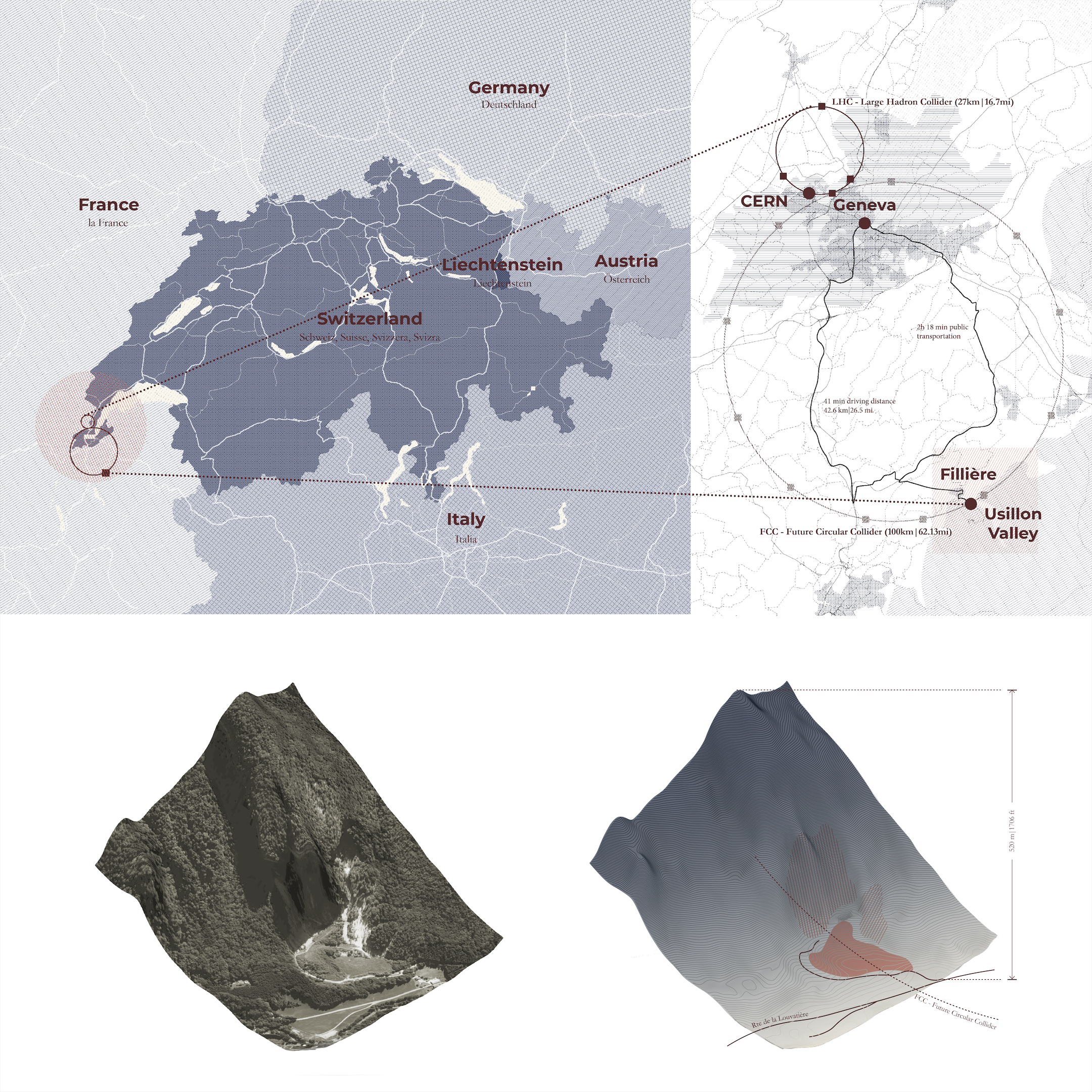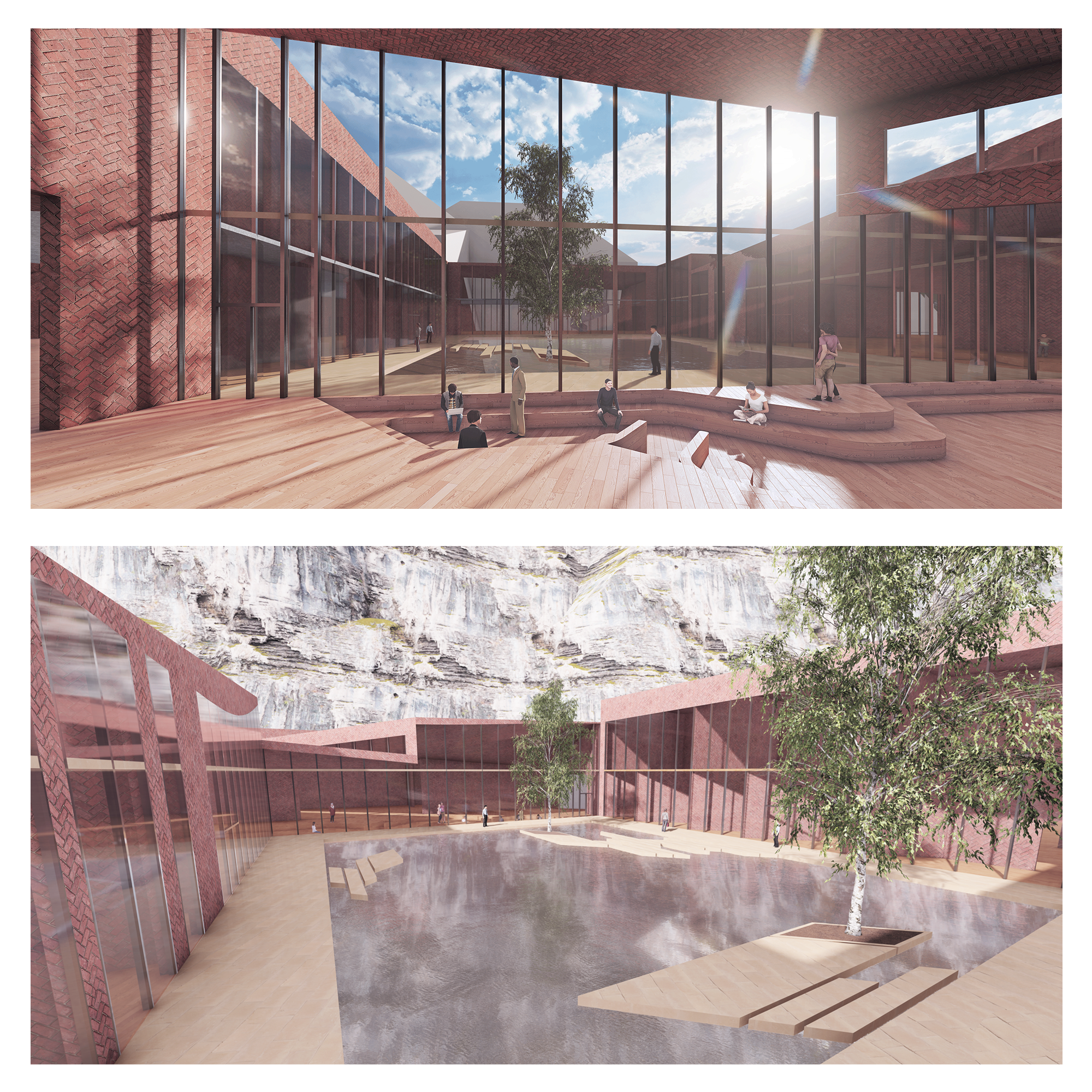PROFESSOR
MATIAS DEL CAMPO
STUDIO
COLLIDER! - DESIGNING A LIBRARY WITH AI
This studio employed Artificial Neural Networks as design method for a library at one of the Experiment Points at CERN’s new Future Circular Collider. CERN is the leading laboratory for particle physics in the world, operating the famous LHC, the Large Hadron Collider. Located in the suburbs of Geneva, Switzerland, the underground LHC is the largest and most complex machine ever built by humanity.
Crashing Hydrogen protons at near light speed reveal subatomic particles that help physicist solve fundamental questions such as “are there extra dimensions?”, “what happened at the beginning of time?” and “what is dark matter?”.
The project in this studio will tackle the next step in the expansion of CERN with the Future Circular Collider (FCC), a new circular collider running under the alps and lake Geneva with 62 miles of circumference. An experimental point is a location along the ring that houses the large underground detectors that are able to record the crashes with minute precision. On the ground level a complex infrastructure is necessary to maintain the ongoing experiments. Using Artificial Neural Networks, harnessing the power of Big Data, the main task of this studio is in discovering a method to blend landscape and experiment point. Exploring the long tradition of the role of architecture in the alpine setting, ideas of the sublime, and methods of camouflage the studio provides ample opportunity to discuss the efficacy and role of AI in a contemporary setting of architecture design.
︎︎︎BACK ︎
JULIA MCMORROUGH
Elliot Smithberger
Ruiying Zhang
MATIAS DEL CAMPO
Dowdle, Ibrahim, Zhang Fahmy, Kamhawi, Pandey
IAN DONALDSON
Gort-Cabeza de Vaca
Anahita Mojahed
DAWN GILPIN
Sang Won Kang
Xin Li
PETER HALQUIST
Chung-Han (Joanne)
Chengdai Yang
PERRY KULPER
Ghassan Alserayhi
Eilís Finnegan
ANN LUI
Will Kirsch
Kendra Soler
STEVEN MANKOUCHE
Stephen Corcoran
Aric Reed
NEAL ROBINSON
Connor Tuthill
Eduardo Villamor
JON RULE
Richard Hua
Qianwei Zhang
CHRISTIAN UNVERZAGT
Siyuan (Elaine) Cheng
Vance Smith Jr
KATHY VELIKOV
Emma Powers
Brian Smith
STUDENT WORK
RYAN DOWDEL,
DIYA IBRAHIM,
SICONG ZHANG
“THE CHALET AT USILLON”
The Chalet at Usillon takes inspiration from the existing visual lexicon of the alps region as well as the subterranean burial mounds of antiquity. These two influences can be seen in the chalet form of the external research facility, and the hidden facets of the subterranean museum, library, and cafe structures. The research facility was designed to blend into the rockface behind, and the other programmatic elements remain undetectable from the surrounding region. Visitors begin at the public facing museum before entering the shared library and cafe spaces where they intermingle with cern staff, ending at the experiment's access chasm.









